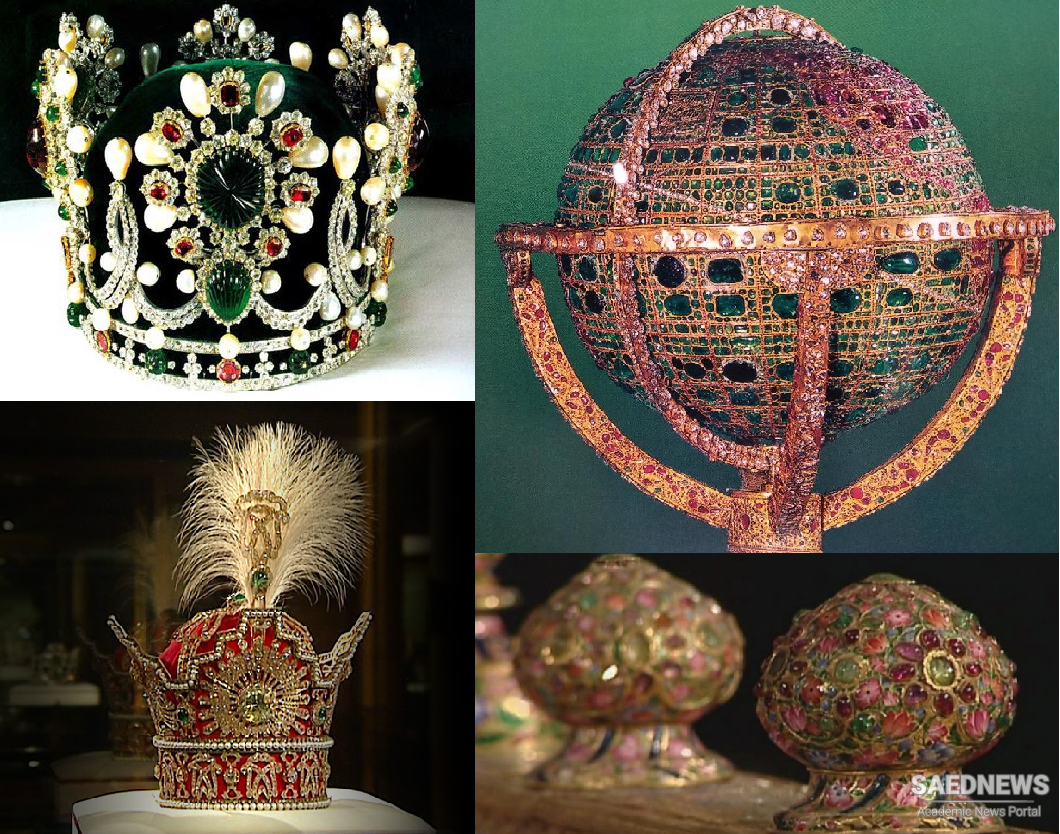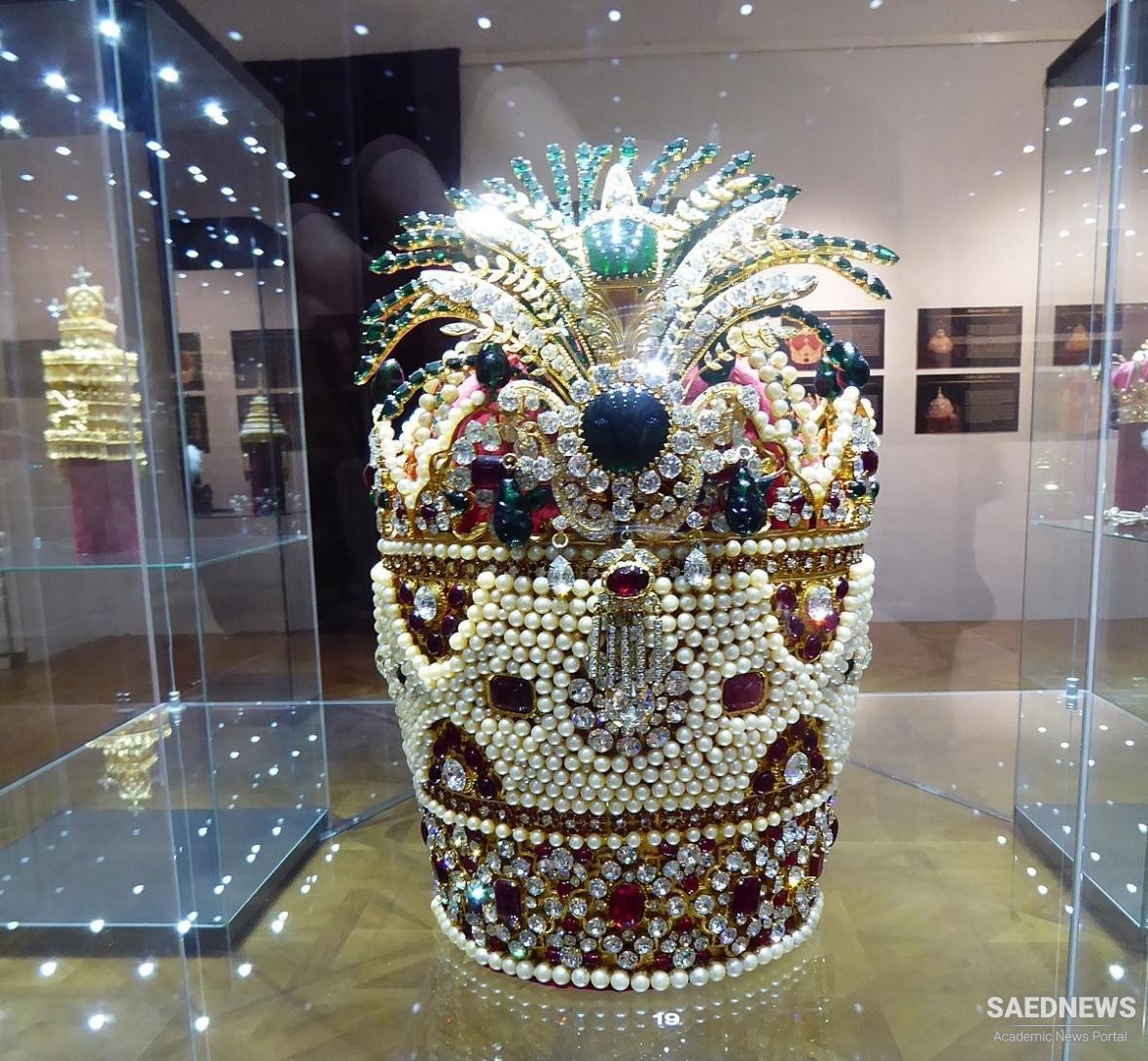Owned by the Central Bank and accessed through its front doors, the cavernous vault that houses what is commonly known as the ‘Jewels Museum’ is probably Tehran’s biggest tourist drawcard. If you’ve already visited the art gallery at the Golestan Palace, you will have seen paintings and photos showing the incredible jewellery with which the Safavid and Qajar monarchs adorned themselves. Come here to gawp at the real things.
Most of the collection dates back to Safavid times, when the shahs scoured Europe, India and the lands of the Ottoman Empire for booty with which to decorate their capital, Esfahan. But as the Safavid empire crumbled, the jewels became a high profile spoil of war. When Mahmud Afghan invaded Iran in 1722, he plundered the treasury and sent its contents to India. On ascending the throne in 1736, Nader Shah Afshar despatched courtiers to ask for the return of the jewels. When their powers of persuasion proved unequal to the task, he sent an army to prove that he was serious. To get the soldiers off his back, Mohammed Shah of India was forced to hand over the Darya-ye Nur and Kuh-e Nur diamonds, a Peacock Throne (though not the one you’ll see here) and assorted other treasures. After Nader Shah’s murder in 1747, Ahmed Beg plundered the treasury and dispersed the jewels. The Kuh-e Nur, the world’s largest cut diamond, found its way into the sticky fingers of the colonial British and has been locked up in the Tower of London since. The Qajar and Pahlavi rulers enthusiastically added to the jewels collection, which grew to be so valuable that in the 1930s it was transferred to the National Bank of Iran (now the Central Bank of Iran) as a reserve for the national currency.

You can pick up a guidebook (stocks permitting) at the shop as you enter, or take one of the regular and professional tours in English, French, German or Arabic – it’s included in the ticket price and worth waiting for as there are few descriptions in English.
Make sure you don’t miss the Darya-ye Nur (Sea of Light), a pink diamond weighing 182 carats and said to be the largest uncut diamond in the world; the Peacock (Naderi) Throne outside the vault door; the tall Kiani Crown made for Fath Ali Shah in 1797; the crowns worn by the last shah and his wife, Farah; and the incredible 34kg Globe of Jewels , made in 1869 using 51,366 precious stones – the seas are made from emeralds and the land from rubies except Iran, Britain and France, which are set in diamonds.
Cameras, phones, bags and guidebooks must be left at reception. Be careful not to touch anything or you’ll set off ear-piercing alarms.


 Tehran the Capital of Iran
Tehran the Capital of Iran














































